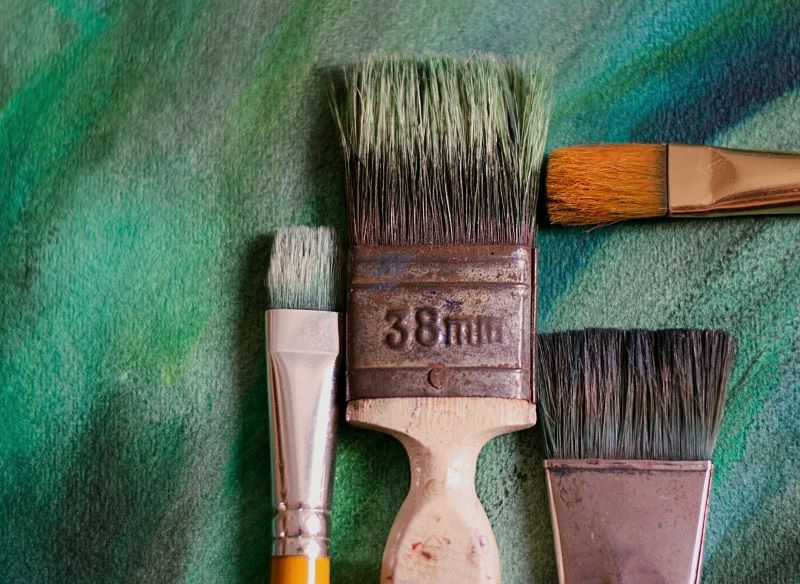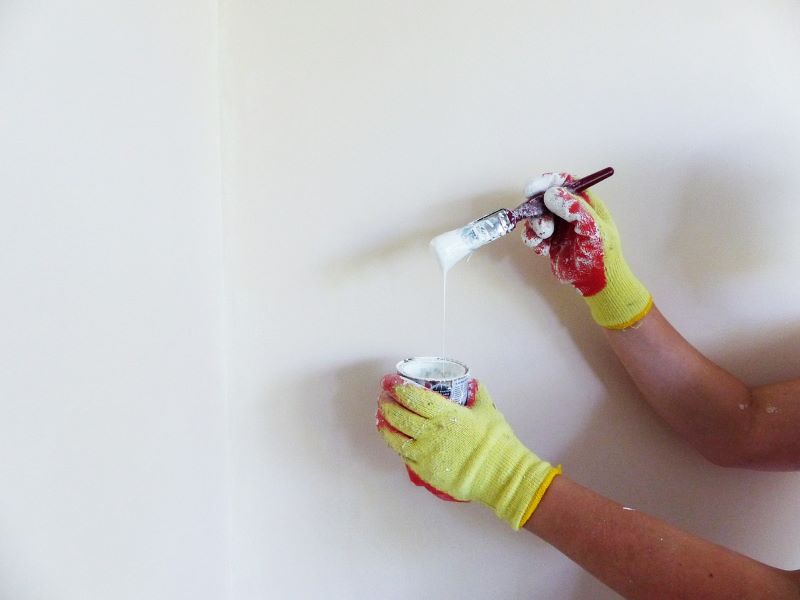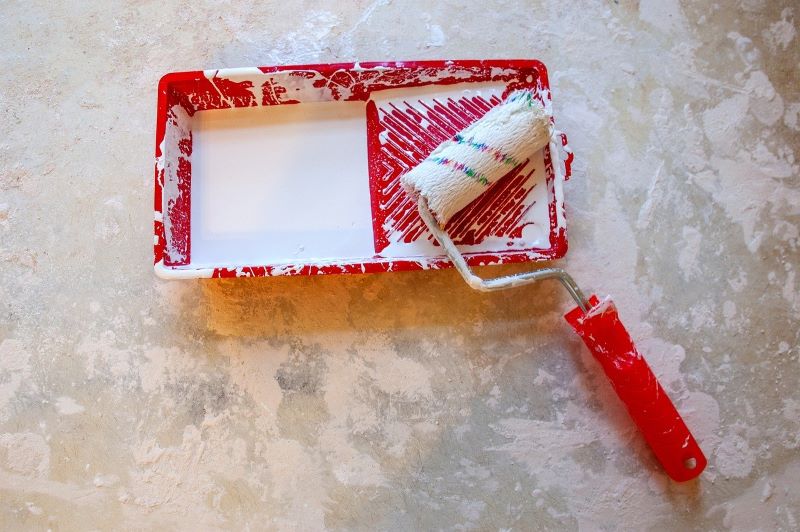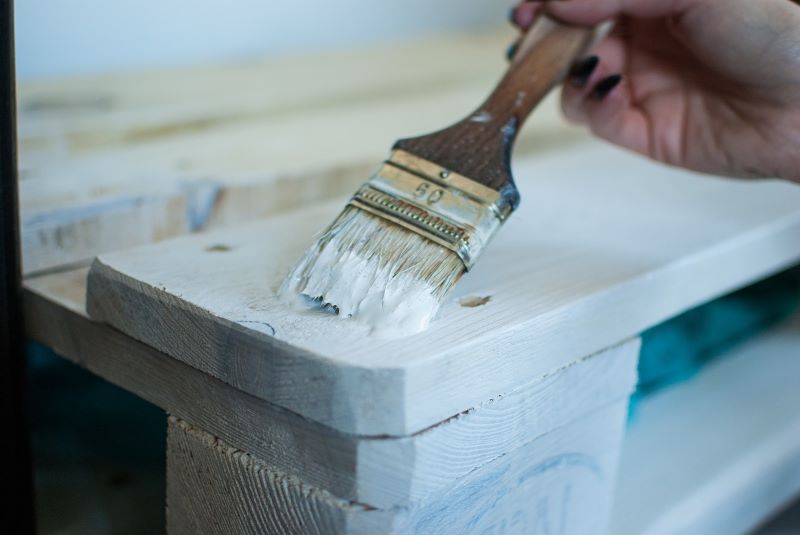Easy Interior Painting? Learn 5 Simple Wall Painting Ideas
Wall painting is a process that requires a lot of patience and commitment. Are you not sure where to begin? Perhaps you have some trouble with smudges and paint dripping from the walls? Learn some simple tricks and discover the secret to an effortless renovation and simple room painting ideas! Check how to paint a wall and get rid of unattractive smudges and other annoying issues.

What should you know about wall painting?
Painting walls means covering the surface with a painting material in a chosen color. Paint can be used to cover walls, but also ceilings. Wall painting is one of the most common activities performed during a room makeover - in addition to plastering and wallpapering. To paint a room, you might use common acrylic paint or magnetic paint, or choose latex paint that forms a special layer with “breathable” properties.
5 wall painting techniques and tips to help you with interior painting
Painting walls does not necessarily mean that you have to be a professional. All you need to do is use some tips and wall painting techniques recommended by specialists. This way painting walls will be easier and less intimidating.
Painting walls - how to begin?
Start painting your walls from mixing the paint thoroughly. Then, using a roller or a brush, paint over the surface along any boards and corners, covering all smaller surfaces. The last step is painting all the remaining larger spaces.
It is important to move a brush or a roller in the right direction. Apply the paint from bottom to top, and then, along the same line from top to bottom. Remember to apply several layers of paint, distributing it evenly. This method ensures that the wall color looks solid.
Brush or roller? Wall painting techniques
If you paint large surfaces, the most universal and convenient tool is simply a traditional roller. It helps to distribute paint evenly and with the same intensity at every spot. There are three types of paint rollers with varios naps:
- short nap roller - from 6 to 10 mm (ca. 1/4 to 3/8 inch) length,
- medium nap roller - from 13 to 15 mm (ca. 1/2 to 2/3 inch) length,
- long nap roller - from 19 to 30 mm (ca. 3/4 to 1 inch) length.
The first type is perfect for painting smooth textures. The medium nap should be used for wallpapers and plaster, while the long nap is for rough surfaces.
Apart from the nap length, the quality and cover material is also important. Before purchasing a roller make sure that it doesn’t loose fibers - they might stick to the painted surface.
Painting walls in narrow, hard to reach spaces? A brush is a perfect tool for that. To avoid dripping, dip the brush more often, carrying less paint every time.

Painting walls vs. room humidity
The best temperature for interior painting is 5 to 25 Celsius degrees (41 to 77 F). The most suitable humidity level for painting is below 80%. Too high temperature and excessive dryness might cause issues, especially if you’re painting walls with water soluble paint. Such a product dries much quicker than traditional paint. Wall painting should be performed at the right pace, otherwise the paint will leave smudges on the surface.
If the humidity level is too low or the temperature is too high, you might dilute the paint. This makes applying the first layer far easier. Make sure to follow the manufacturer’s instructions printed on the container.
How to avoid smudges? “Wet on wet” wall painting techniques
To make the surface look uniform and avoid smears and smudges, join the painted fragments using “wet on wet” technique. How to paint a wall using this method?
It is a technique recommended by professionals. It involves applying the paint with overlapping strokes. The easiest way to achieve this effect is painting walls in a “V” shape. First, paint the external lines and then start filling the space between them. Thanks to this method, the product is evenly distributed on the wall.
With at least two people painting the walls, the risk of smudges is much smaller. To make the surface even more uniform, give up using a brush and pick a roller, which is easier to use.

What to do with the tools after you finish painting?
If you have already finished painting the walls, take care of the tools and other products you have been using. On the other hand, if you’re just taking a break and plan to continue painting the next day, put the dirty brushes and the roller in an airtight plastic bag.
Remember to clean every tool thoroughly after finishing painting. Close the paint containers, otherwise they will dry and you will not be able to use them again.
Quick room painting ideas - painting walls with a paint sprayer
Painting walls with a paint sprayer involves using a special unit that spreads the paint on the surface under high pressure. It is a very interesting and unusual method for interior painting, although it might be problematic for some people.
Before using the sprayer, you should prepare it - pour the paint into it in the proper amount. Make sure to test it before applying the paint on the wall. It’s important to keep the right pressure level (around 3 bars) as you work, as well as maintain a proper distance (15-20 cm/6-7 inches). Otherwise, the paint might cover the walls unevenly, causing unaesthetic-looking smudges.
Painting walls with a sprayer typically requires only one layer of paint - with this method it is sufficient enough. After you finish working, clean the sprayer thoroughly using water and solvent.
How to paint a ceiling?
If you’re planning to paint the whole room, the best method is to start from the ceiling. To do this, use a roller with a long handle to apply the ceiling paint. It is a definitely easier method to cover the ceiling quickly.

Start by applying the paint right by the window, gradually leading the roller towards the middle of the ceiling. As you paint the ceiling by the window, drag the paint in the same direction as the sunrays go. This way you can minimize smudges.
Looking for room painting ideas? The most popular ceiling paint color is white in various shades and temperatures. It makes the room look bright and it’s not tiring. In some interiors, such as bedrooms the ceiling paint color is the same as the walls. This way the room looks darker, which might improve sleep quality.
To make the room seem bigger, drag the color of the ceiling paint onto the side walls. A small white stripe at the top of the wall will create an optical illusion, making the room seem bigger.
Wall painting - price
The price of painting a room by a specialist painter varies, depending on different factors. The major element influencing the expenses is the type of the wall paint. There are many various paints on the market, so you might decide between cheap, medium or expensive products. You should also purchase other materials, such as primer.

The total cost of painting a room also depends on the tools you use. If you paint walls for the first time ever, you should equip yourself with appropriate accessories. It increases the cost of the renovation. If you take a good care of your brushes and rollers, all the tools can be reused.
Washing walls before painting - why is it so important?
Dirt on walls has a negative impact on the paint adhesiveness, therefore it is crucial to wash them before painting. It should become a routine when preparing the walls before a room makeover. In some cases washing the walls is absolutely necessary if you want to achieve long-lasting and really fresh results.
When is it necessary to clean walls?
It is advised to clean walls before painting especially if there are greasy stains on the surface. It occurs most often in the kitchen, as the oil you use for cooking easily spreads onto the walls. Wall washing is also suggested before painting a children’s room - children like to touch walls with their hands, which are not always clean.
Washing walls before painting prevents the paint from peeling off. You should also do it if you notice the following:
- fungus and mold,
- yellow stains and marks from cigarette smoke,
- stains from various liquid substances, e.g.: disinfectants, air fresheners or perfumes,
- other visible dirt, e.g.: crayons and mud.
How to wash walls before painting?
Choose wall cleaning products according to how heavily the wall is stained and to the type of the stain. If it’s only a light dirt, a solution of warm water and detergent (e.g. dish soap) should be effective enough.

Such a solution might be not enough for large and very greasy stains or for mold and fungi. In this case washing walls with sugar soap before wall painting might be quite effective. To do it, dilute the right amount of soap in water, as stated in the instruction. Then clean the walls using a sponge. After you’re finished, rinse the surface with clean water to avoid soapy residues.
Before you begin painting walls, think about choosing the right colors. Check the trendiest room colors and choose the one you like best.
📍 How much does wall painting cost?
The price depends on the size of the surface you want to paint and on the cost of materials. You might ask a professional to do it for you, although the price will be higher. Painting walls by yourself is much cheaper.
📍 How to paint a wall in my room?
Start from securing the room and remove furniture and other objects from it. Prepare the wall - clean it and make sure the surface is even. After applying the primer, you can start painting - for best results, use a paint roller.
Featured articles




